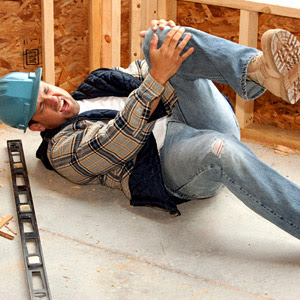With winter weather already inconveniencing many outdoor work sites, it is important to maintain a safe workplace environment this season to help protect your employees. Safe Site Medical, a provider of on-site medical services to the construction industry is well aware of the hazards at your workplace, so we would like to share a few tips from OSHA on how to prepare your work-site this winter.
Provide Engineering Controls to Combat Winter
- Radiant heaters may be used to warm workplaces like outdoor security stations
- Shield work areas from drafts or wind to reduce wind chill.
Implement Safe Winter Work Practices
- Schedule jobs that expose workers to the cold weather in the warmer part of the day
- Avoid exposure to extremely cold temperatures when possible
- Limit the amount of time spent outdoors on extremely cold days
- Provide warm areas for use during break periods
- Provide warm liquids (no alcohol) to workers
- Monitor workers who are at risk of cold stress
- Monitor the weather conditions during a winter storm, having a reliable means of communicating with workers and being able to stop work or evacuate when necessary
Dress Properly for the Cold
- Dressing properly is extremely important to preventing cold stress. When cold environments or temperatures cannot be avoided, the following would help protect workers from cold stress:
- Wear at least three layers of loose fitting clothing. Layering provides better insulation.
- An inner layer of wool, silk or synthetic (polypropylene) to keep moisture away from the body. Thermal wear, wool, silk or polypropylene, inner layers of clothing that will hold more body heat than cotton.
- A middle layer of wool or synthetic to provide insulation even when wet.
- An outer wind and rain protection layer that allows some ventilation to prevent overheating.
- Tight clothing reduces blood circulation. Warm blood needs to be circulated to the extremities. Insulated coat/jacket (water resistant if necessary)
- Knit mask to cover face and mouth (if needed)
- Hat that will cover your ears as well. A hat will help keep your whole body warmer. Hats reduce the amount of body heat that escapes from your head.
- Insulated gloves (water resistant if necessary), to protect the hands
- Insulated and waterproof boots to protect the feet
Your Safe Site Medical Advantage
We help prevent OSHA Recordables & Lost-Work Time by reducing the need for Off-Site clinic treatments & unnecessary medications
We have a Specialized Team of Emergency Technicians, Paramedics, & Registered Nurses that are highly skilled in:
- Follow-up Care
- Case Management
- First Aid & CPR Training
To learn more about on-site medical services for large construction projects please visit www.safesitemedical.com.














